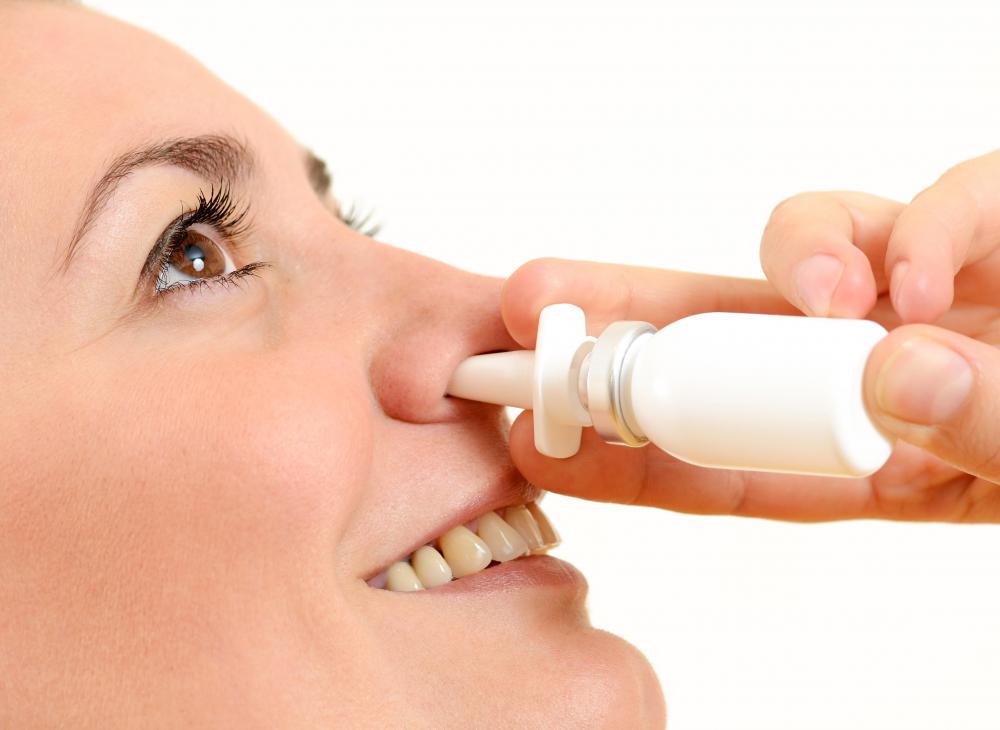At WiseGEEK, we're committed to delivering accurate, trustworthy information. Our expert-authored content is rigorously fact-checked and sourced from credible authorities. Discover how we uphold the highest standards in providing you with reliable knowledge.
What are the Most Common Causes of Yellow Phlegm from the Nose?
An individual may notice phlegm, also referred to as mucus, coming from the nose for a variety of different reasons. The flow of yellow phlegm from the nose almost always means that some type of irritation or inflammation is present. In many cases, a person notices phlegm coming from the nose because of a virus, including a common cold, an allergy, or even asthma. Sometimes, however, a bacterial infection that affects the respiratory system is at fault instead.
Often, when a person notices a discharge of yellow phlegm from the nose, he assumes it indicates the presence of a serious infection. In truth, however, this often occurs when a person has only a minor viral infection, including one as simple as a common cold. When a person has a viral infection, the phlegm that comes from his nose typically starts out clear and gradually turns yellow. This is usually one of the signs that the body is fighting an infection. It doesn’t always mean that the body is fighting an infection that is bacterial or serious in nature, however.

Though yellow phlegm coming from the nose doesn’t always mean a person has a serious infection, it does indicate one sometimes. When a person has yellow phlegm coming from the nose, it can mean a person has a bacterial infection instead of one caused by a virus. This is particularly true when the yellow mucus is thick or sticky, though thinner yellow mucus can develop with a bacterial infection as well. Some bacterial infections also are accompanied by yellow phlegm that eventually turns green.

The presence of white blood cells called leukocytes is often responsible for the flow of yellow phlegm from the nose when a person has an infection. The phlegm starts out clear and may start to turn yellow after about two or three days. This change in color is the result of a buildup of white blood cells in the nasal passages.
Though the presence of yellow phlegm from the nose isn’t always a sign of a serious infection, this doesn’t mean a person should ignore it. In the event that yellow mucus lasts for more than about seven days, an individual may do well to seek evaluation from his doctor. Additionally, an individual may seek medical attention if he has symptoms that seem more severe than one might expect with a minor infection.
AS FEATURED ON:
AS FEATURED ON:


















Discussion Comments
I had yellow mucus from my nose once because of a piercing. My nose piercing got infected and I had yellow discharge with a terrible smell. I had to take antibiotics.
@alisha-- Phlegm doesn't always originate in the lungs, it can also originate in the sinuses and the ears when there is an infection.
I get yellow phlegm from my nose when I have a sinus infection. I've asked my doctor about this and he said that it's nothing to worry about. Apparently, yellow phlegm means that the immune system cells are actively fighting an infection.
When I get phlegm because of my sinuses, I take an over-the-counter decongestant and that usually does the trick.
I've had a cough with yellow phlegm before when I had throat and upper respiratory infections. But the phlegm always came from my throat and never my nose. I don't really understand how phlegm can come from the nose, because doesn't phlegm form in the lungs?
Post your comments